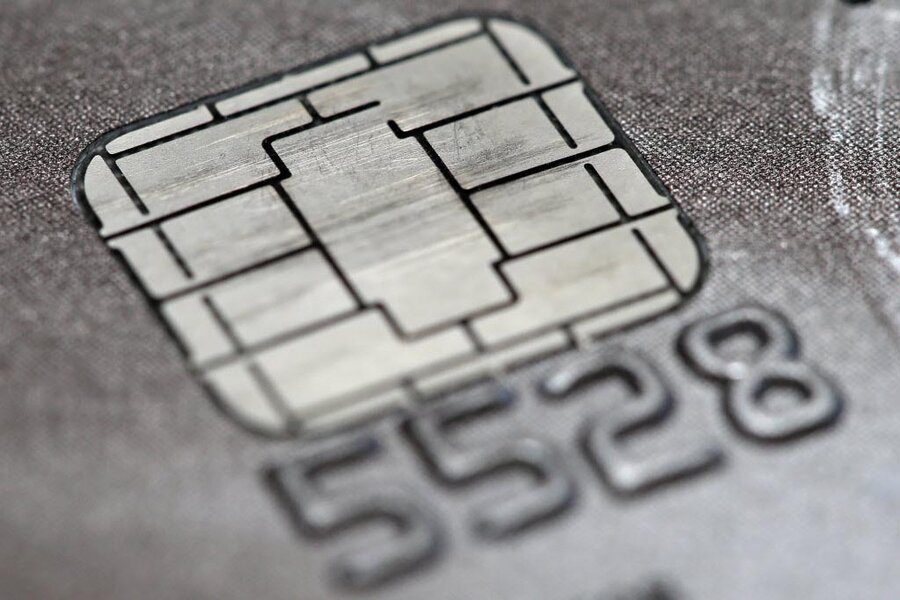Is your credit card secure? How to get latest chip and dip technology
Loading...
Thursday marks the deadline for US credit card industry and merchants to make a transition to cards with chip technology, but only about 40 percent of consumers currently possess a card with the EMV chip.
Working in conjunction with PIN codes, the chip technology help prevent identity theft. The cards are dipped into a card reader instead of swiped, and they make it difficult for thieves to make copies. Europe has already widely adopted the technology.
As Virginia C. McGuire of Nerdwallet wrote for The Christian Science Monitor:
With EMV cards – named for Europay, MasterCard and Visa, which developed the technology – information is encrypted and stored on a microchip embedded in your card, which makes it much harder to 'skim' data off your card. Also, when you use an EMV card for a transaction, the merchant’s computers don’t save your account information, protecting you in the event of a data breach.
The deadline this week doesn’t mandate the credit card companies to have the cards in the wallets of consumers – it just requires issuers and retailers to assume greater liability.
"We were expecting a little bigger number, but we also understood that this is going to be a long process," Matt Schulz, senior industry analyst at CreditCards.com, tells the Associated Press of the number of people with the new chip cards.
About a quarter of stores in the United States can accept the cards, which comprise 40 percent of all US-branded consumer credit cards, according to MasterCard.
Mr. Schulz says you’ll likely see the new payment stations at national stores like Target or Home Depot. At retailers without the dip reader, chip cards can still be swiped.
CreditCard.com also found that the people most likely to have the new cards are those with annual income over $75,000 — they’re more than twice as likely to have a chip card than people with lower incomes.
Schulz says this is because the earliest adopters of chip cards are frequent international travelers.
For cardholders who want a chip card as soon as possible, they can call and request one directly from their credit card company. If not, they should receive a new card in the mail at some point. More information is available on the industry website.
This report contains material from the Associated Press.








